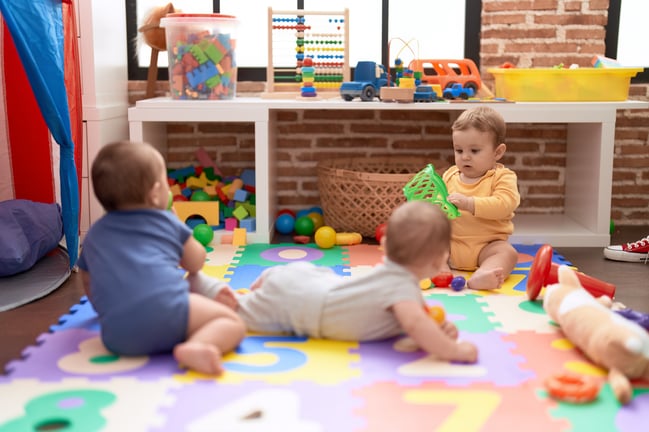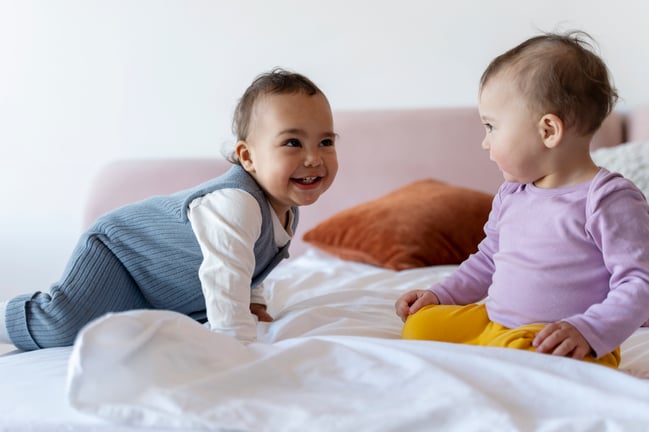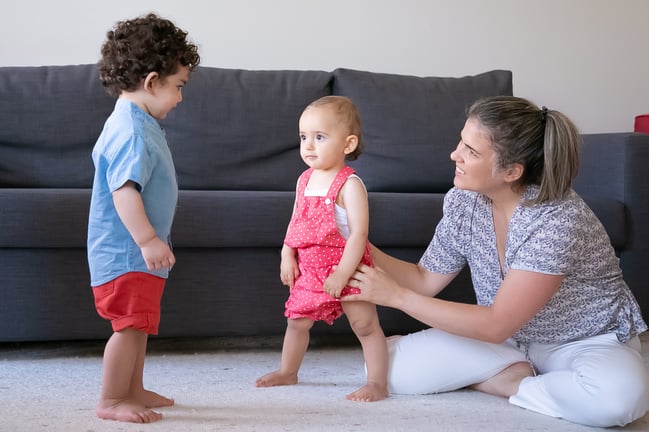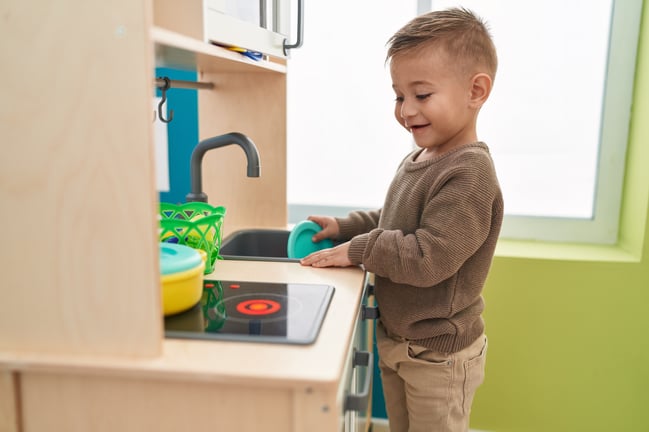
Approaches to Learning
Younger Toddlers (8 to 21 months)
Components and Developmental Indicators
Younger Toddlers (8 to 21 months)
Components and Developmental Indicators
Developmental Indicators
AL Goal-1: Children demonstrate curiosity and eagerness and express interest in the world around them.

Watch a trusted person to gauge their level of curiosity and eagerness before interacting with objects or other people.

Imitate facial expressions and movements of others.

Show curiosity about their surroundings (points, facial expressions, simple words).

Show delight when exploring and making things happen (clapping, smiling, repeating actions over and over).

Enjoy sensory experiences (splashing water, tasting, touching, and shaking objects).
AL Goal-2: Children actively seek to understand the world around them in play and everyday tasks.

Initiate activities that interest them and try to get others involved.

Use toys and other objects to make things happen (kick a ball, push a button on a toy).

Move toward people and things that are new and/or interesting.
 Seek information from adults by pointing or with a questioning look or sound.
Seek information from adults by pointing or with a questioning look or sound.
Developmental Indicators
AL Goal-3: Children demonstrate initiative and effort in play and everyday tasks.

Express choices with actions or simple language (points or reaches for desired objects or food options).

Seek to repeat experiences they enjoy or those that result in feeling successful (climb up and down stairs).

Try to help with self-care (brushing hair) and activities (turning pages in a book you are reading together).
AL Goal-4: Children are engaged and maintain focus in play and everyday tasks.

Focus on self-selected activity for a short period of time (decide to play in the sandbox and stay there for a couple of minutes).

Focus on an interesting activity or interaction shared with adults for a short period of time.
AL Goal-5: Children persist at challenging activities in play and everyday tasks.

Keep trying to accomplish tasks that they are not initially able to do (put objects inside container, use spoon, put on hat).
Developmental Indicators
AL Goal-6: Children are willing to try new and challenging experiences in play and everyday tasks.

Try unfamiliar experiences and interact with new people with a familiar adult nearby.

Move away from a familiar adult to explore but check in frequently.

Show interest in toys that offer a challenge and try to make them work.
AL Goal-7: Children use a variety of strategies to solve problems in play and everyday tasks.

Try one or two strategies to get what they want or solve a problem (try giving a peer an alternate toy to get a desired toy from him/her; try to put a ball in a box—if it will not fit, gets a bigger box).

After unsuccessful attempt to solve a problem, ask for help from an adult (point, gesture, speak).

Vary actions on purpose to solve a problem (bang then turn shape to fit in sorter, shake handle then pull).

Use available resources to accomplish a goal or solve a problem (push a stool to a counter to reach for something).
Developmental Indicators
AL Goal-8: Children engage in increasingly complex play.

Play alongside other children, sometimes imitating their actions.

Imitate adult actions with objects, first with real objects and then with objects that are used to represent another object (talk on phone, feed doll, use a chair as a pretend car).

Take turns in simple games (pat-a-cake, peek-a-boo).

Offer toys and objects to others.
AL Goal-9: Children demonstrate creativity, imagination, and inventiveness in play and everyday tasks.

Do new things with familiar objects or combine them in unusual ways (use a dress up boa as a snake, pound a drum with a plastic bottle, try to stack bears).




